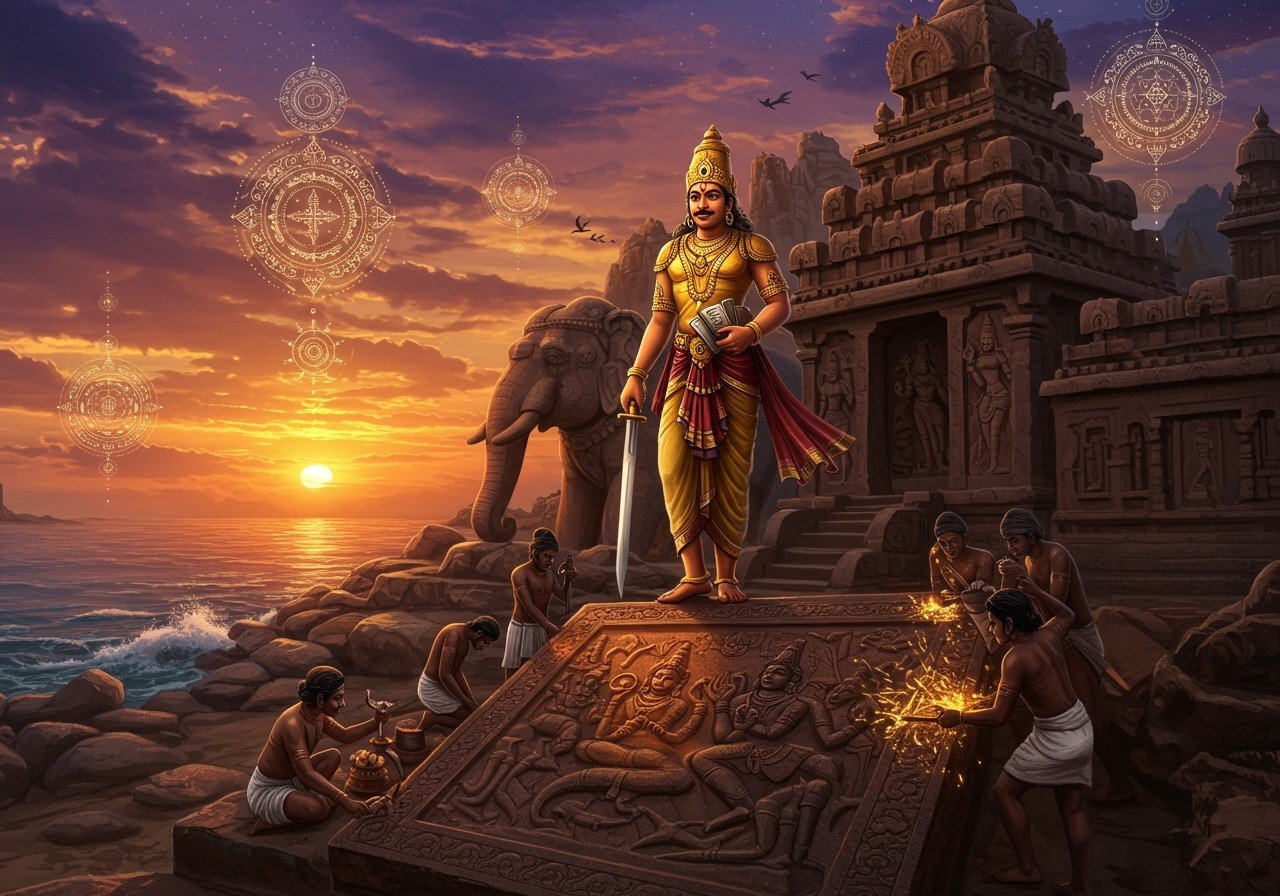
The Pallava Dynasty, a prominent force in South Indian history, reigned from 275 CE to 897 CE, leaving an enduring legacy of art, architecture, and cultural contributions. This exploration delves into their origins, notable rulers, and significant achievements, offering a glimpse into the rich tapestry they wove into the fabric of ancient India. This exploration is specially curated for culturally rooted Indians who appreciate the depth of their traditions and history.
Origins and Rise to Prominence
Emerging from the shadows of the fallen Satavahana Empire, the Pallavas, whose name is believed to derive from the Tamil word ‘Pallavam’ meaning branch, initially served as feudatories. Their origins remain a subject of scholarly debate, with theories suggesting both indigenous Tamil roots and migration from northern India. Establishing their capital at Kanchipuram, present-day Tamil Nadu, they gradually rose to become a dominant force in the Deccan region. Prakrit records offer the earliest references to the Pallavas, dating back to around the 2nd century CE.
Key Figures and Early Reign
The dynasty’s foundation was solidified by influential figures like Simhavishnu, considered the first prominent ruler. Mahendravarman I (571-630 CE) further strengthened their position, making significant contributions to art and architecture, including the development of cave temples. His successor, Narasimhavarman I, also known as Mamalla, was a renowned military leader and spearheaded the construction of the iconic rock-cut temples at Mahabalipuram.
Golden Age and Architectural Marvels
The Pallavas reached their zenith under Narasimhavarman II (Rajasimha) and his successors. His reign, marked by prosperity and cultural flourishing, saw the construction of the magnificent Kailasanatha Temple in Kanchipuram. This era showcased the pinnacle of Pallava architectural prowess, with intricate carvings and monolithic structures becoming hallmarks of their unique Dravidian style. The rock-cut temples at Mahabalipuram, a UNESCO World Heritage Site, including the Shore Temple and Pancha Rathas, stand as testaments to their artistic ingenuity. These temples also functioned as cultural centers, nurturing the growth of classical music, dance, and literature, further enriching South India’s cultural landscape.
Explore the architectural wonders of the Badami Cave Temples, built by the Chalukya Dynasty, contemporaries of the Pallavas.
Discover the Kandariya Mahadeva Temple and its religious significance, showcasing the architectural influences of the Chandela dynasty.
Military Prowess and Conflicts
Beyond their artistic achievements, the Pallavas were a formidable military power. Their reign witnessed numerous conflicts, particularly with the Chalukyas of Badami and the Pandyas of Madurai. The legendary battles between Narasimhavarman I and the Chalukya ruler Pulakeshin II, culminating in the Pallava victory at the Battle of Vatapi, are etched in history. These military campaigns played a crucial role in establishing and maintaining their regional dominance. Their naval expeditions extended their influence to Sri Lanka and Southeast Asia, showcasing their maritime strength and impacting regional geopolitics.
Decline and Enduring Legacy
The 9th century CE marked the beginning of the Pallava decline with the rise of the Chola Empire. However, their influence continued to resonate through the architectural and cultural foundations they laid. The Dravidian style they pioneered continued to inspire later dynasties, and the cultural and religious institutions they established flourished long after their reign. The enduring monuments and rich traditions of Tamil Nadu serve as a testament to their profound impact on South Indian history.
Connecting to the Pallava Heritage Through Poojn.in
Poojn.in, India’s leading online store for cultural and religious goods, offers a curated collection that allows you to connect with the rich spiritual heritage of the Pallava Dynasty. Explore our range of authentic puja items, handcrafted idols, and traditional temple accessories, carefully selected to reflect the reverence and artistry of this era.
Discover our collection of Bel malas, perfect for your daily prayers and rituals.
Enhance your home shrine with our exquisite marble dust Shiva Lingams.
Bring the divine presence into your home with our Athizay stone Shiva Lingam and Nandi sets.


